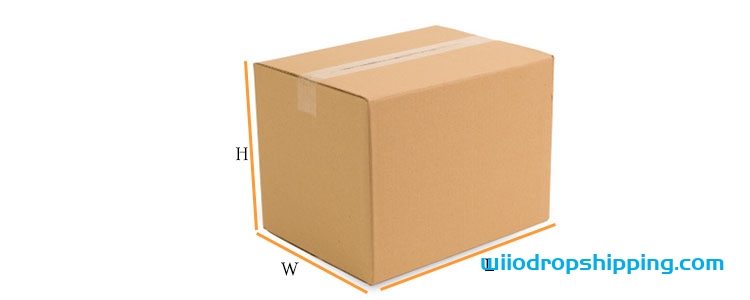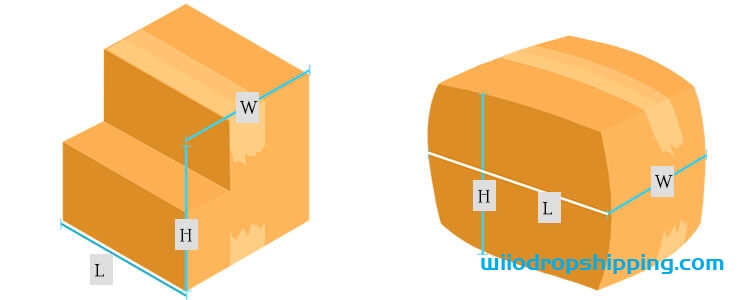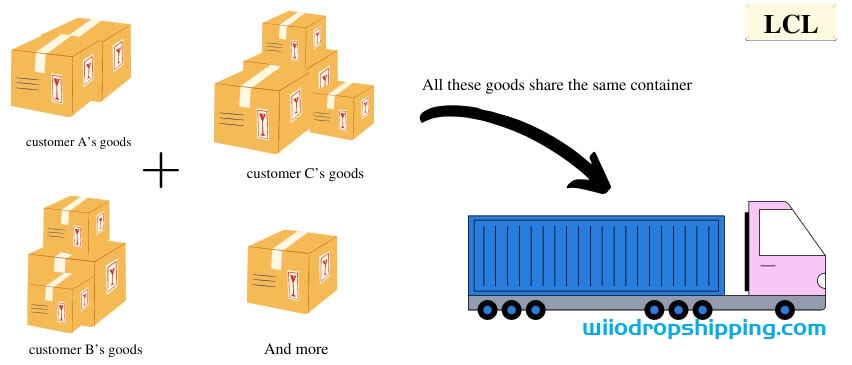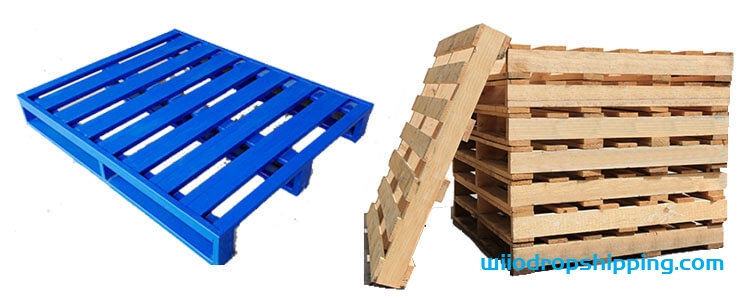Physical Address
304 North Cardinal St.
Dorchester Center, MA 02124

People who own import and export businesses must be familiar with CBM regardless of scales as you need to use it when measuring the cargo or calculating the cost. Choosing the right containers and shipping methods can save your cargo bills and also speed up your shipments.
This article highlights some of the key definitions including the CBM and discusses how it affects your freight costs. Let’s get started.
CBM or cubic meter is the volume of your products in domestic and international shipments. It is a weighing unit that is used to determine the freight cost of your packages or cargo. It is applied to calculate:
CBM is used for all three modes of shipping methods including air, sea, and road.
To calculate the CBM of your shipment, you’ll have to classify it into a particular category according to the shape and dimensions of your packages. There are three broad categories for this classification:

Cube and cuboid packages are the most widely used containers due to several reasons. They are readily available, easy to handle, highly operational, and the most economical choice for shipment purposes.
Formula
CBM = Length x Width x Height

In rare/exceptional cases, you may have to use an irregular package for shipment reasons. These packages don’t have symmetrical dimensions and therefore, the conventional CBM formula is not applied in their case.
Formula
CBM = Longest Length x Longest Width x Longest Height
Cylindrical packages provide immense value to certain traders who trade unconventional products. For instance, oil traders used cylindrical containers as they provide better packaging and transportation solutions.
Formula
CBM = π x r² x h
Before you calculate the CBM and freight changes for several types of shipping, you must understand some critical definitions:
Actual weight is the real weight of the cargo plus package, self or pallet, and container that appears on a weighing scale. Carriers measure and weigh cargo during the inquiry process after it has been fully packaged, using a certified freight scale.
Apart from calculating the freight charges, determining actual weight can also help you in making sure that the cargo is evenly placed within the package. This is to ensure the safety of the goods.
Dimensional weight is a reference to the weight calculated on the basis of the goods volume. When your goods is light but huge, which may cover more space in the container, the freight cost will be charged by the dimensional weight instead of the actual weight.
For instance, you might be shipping lightweight products like plastic balls that are excessively large in size and cover more space. Then, the freight cost will be calculated according to the dimensional weight of the products.
Only after you have identified the dimensional weight of your cargo can you compare it with the actual weight and identify the chargeable weight.
Dimensional weight is also known as DIM weight, cubed weight, or volumetric weight. It is calculated as follows:
Dimensional Weight
=(Length × Width × Height) x Quantity / DIM Factor
= Total Cargo Volume (CBM) / DIM Factor
A DIM factor represents a number set by carriers to identify the volume of a shipment allowed per unit of weight.
Different shipping methods have different DIM factor:
Just like the actual weight, the dimensional weight will also be verified by the carrier. Also, it is important to note that the DIM factors used by carriers might be slightly different than the ones mentioned above.
Therefore, it is possible that your DIM calculation might not reconcile with the one carried out by one or multiple carriers. You can inquire about a particular DIM factor beforehand to avoid any such issues.
Besides the formula of calculating dimensional weight above, you can also use the rate to convert CBM into kg directly.
Ocean Freight: 1CBM = 1000kg
Air Freight: 1 CBM = 167kg
Express Freight/Courier: 1CBM = 200kg
Truck LTL: 1CBM = 333kg
The chargeable weight is the greater value between the dimensional weight and the actual weight.
If the dimensional weight is greater than gross weight, the carrier will charge by dimensional weight and the cargo is called light cargo.
Conversely, actual weight greater than dimensional weight, charge by actual weight and the cargo called heavy cargo.
In general, it is more common to use chargeable weight in courier and air shipping.
To compare the dimensional weight and the actual weight, you must have both values in the same units preferably kilograms.
The dimensional weight will also be calculated in kg once you divide the CBM (in m³) by its suitable DIM factor or you can convert it to kg based on the rate.
E.g. Air shipment CBM = 2.4 m³
Air shipment dimensional weight = 2.4 /0.006 = 400 kg= 2.4 x 167 = 400.8 kg

Less-Than-Container-Load or LCL refers to a container that carries the packages of multiple shippers. For smaller shipments, it’s better to choose LCL shipping.
LCL shipping is an economical option for small shipments. As you’ll be sharing a container, your packages may face the risk of damage, loss.
Full-Container-Load or FCL refers to a scenario in which you book a whole container rather than sharing it with other shippers. This is a more expensive option than LCL, but it is quicker as it faces fewer hindrances.
FCL can also be cost-effective if you are dealing with large shipments. If your cargo volume is over 20CBM, then it will be cheaper to ask the freight forwarder to book a container only for you.
You can check the blog about FCL vs LCL to get more information about their differences.
Calculating CBM is straightforward once you understand how to calculate CBM and how to convert that CBM into kg. Then, you must compare this dimensional weight against the actual/gross weight.
Whichever of these figures is higher will be matched against the freight rate decided by the carrier for 1 CBM or 1 kg/ton.
In the following, I’ll use some instances to tell you how to figure out these.
If the quantity of your goods exceeds 2 CBM, it’s better to use sea freight. If the quantity of your goods is small and its volume is less than 15 CBM, it’s better to ship by LCL and you can find a freight forwarder to help you.
In general, LCL uses CBM (Cubic Meter) as the unit to calculate the freight. You must follow the steps listed below to calculate CBM and freight charges for LCL ocean freight.
In this example, we suppose that we have a cube package with symmetrical dimensions.
Step1- Check the gross weight of the total cargo
Suppose gross weight = 1200 kg
Step 2 – Calculate the CBM of total cargo
CBM = Length x Width x Height x Quantity
CBM = 0.1 x 0. 2 x 0.8 x 500= 8 m³
Step 3- Multiply CBM with the freight rate
Freight Cost = CBM x Freight Rate
Freight Cost = 8 X $70= $560
*We have supposed the freight rate to be $70 per CBM
In air shipment, you must follow the steps listed below to calculate CBM and freight charges.
In the following example, we’ll suppose that we have a regular package with symmetrical dimensions.
Step1- Calculate the CBM
CBM = Longest Length x Longest Width x Longest Height
CBM = 1.2 x 0.5 x 2= 1.2 m³
Step 2 – Calculate the dimensional weight
DIM = CBM/ DIM Factor
DIM = 1.2 / 0.006 = 200 kg
Step 3 – Define the Gross Weight
Suppose Gross Weight = 600 kg
Step 4 – Compare the Dimensional Weight against the Gross Weight
200kg < 600 kg
Freight cost will be charged on the basis of Gross weight
Step 5 – Multiply the higher value with the Freight Rate
Freight Cost = Freight Rate x Gross Weight
Freight Cost = $5 x 600 = $3000
*We have supposed the freight rate to be $5 per kg.
For a single package or small batch, you can consider shipping goods by courier. In express courier, you must follow the steps listed below to calculate CBM and freight charges.
In the following example, we’ll suppose that we have a regular package with a regular package.
Step1- Calculate the CBM
CBM = Length x Width x Height x Quantity
CBM = 1 x 1x 0.5 x 1= 0.5 m³
Step 2 – Calculate the Dimensional Weight
DIM = CBM / DIM Factor
DIM = 0.5 /0.005 = 10 kg
Step 3 – Define the Actual/Weight
Suppose Actual Weight = 20kg
Step 4 – Compare the Dimensional Weight Against the Actual Weight
10 kg < 20kg
Step 5 – Multiply the higher value with the Freight Rate
Freight Cost = Freight Rate x Dimensional Weight
Freight Cost = $6 x 20 = $120
*We have supposed the freight rate to be $6 per kg.
As we discussed earlier, in the case of LCL, you must determine the CBM and freight charges yourself. But this is not the case with FCL. The dimensions of standard containers are pre-defined and thus their CBMs and dimensional weights need not be calculated repeatedly.
In the following table, we’ll introduce the dimensions of each container for your reference. Take a note.
| Type of Containers | CBM (m3) |
|---|---|
| 20ft Dry Container | 33 |
| 20ft Reefer Container | 27.5 |
| 20ft Open Top Container | 31.6 |
| 20ft Flat Rack Container | 30.9 |
| 20ft Collapsible Flat Rack Container | 28.2 |
| 20ft Open Side/Open Top Container | 31 |
| 40ft Dry Container | 67.3 |
| 40ft High Cube Dry Container | 76 |
| 40ft Reefer Container | 54.9 |
| 40ft High Cube Reefer Container | 66.9 |
| 40ft Open Top Container | 64 |
| 40ft Flat Rack Container | 61.9 |
| 40ft Collapsable Flat Rack Container | 52.5 |
| 45ft High Cube Dry Container | 85.7 |
| 45ft High Cube Reefer Container | 75.4 |
p.s. The dimensions here all refer to the internal sizes of the containers.
Businesses, especially new ones have limited funds. If a business is engaged in the import/export of goods, shipping expenses are critical for cost-effective operations.
You are in full control over your container under FCL. Having the CBM figures beforehand can help you calculate the cost and arrange your packages inside a container.

Pallets are small wooden stands upon which cases are piled up inside the containers for space management and safe transportation of the goods. Effective packaging is a game-changing solution for a shipper with limited options. Pallets can give you even more insight on how can efficiently handle smaller packages in a much larger FCLs.
Pallets vary in different materials, sizes, and standards as containers. If you want to calculate CBM for pallet transport, you need to check the height limit in pallet shipping.
The height differs from shipping solutions like containers, lorry, etc. and you should also consider the payload of the pallet, so the CBM in a pallet is variable.
According to ISO standard, here are 5 types of commonly used pallet specifications:
| Size | Commonly Used Country |
|---|---|
| 1200 mm x 1000 mm | Europe |
| 1200 mm x 800 mm | Europe |
| 1140 mm x 1140 mm | Australia |
| 1016 mm x 1219 mm (40 inch) x (48 inch) |
America |
| 1100 mm x 1100 mm | Asia |
In principle, packed cargos should not exceed the length and width of pallets. Based on the sizes of standard pallets, the length and width of goods should be generally 0.8 meters – 1.2 meters and the height is generally 1-1.5 meters or so. Therefore, the CBM of a pallet good is usually 1-1.5 cubic meters or so.
Final Words
We have explained all the necessary information when you want to ship your packages. If you still have problems, please leave a message below to let me know.
